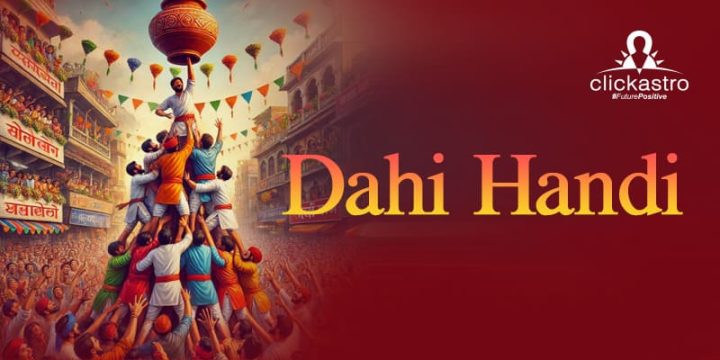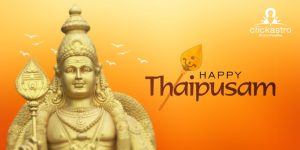Introduction
On Saturday, 16 August 2025, the vibrant and joyous festival of Dahi Handi will be celebrated with fervour and enthusiasm across India.
This festival, also known as “
Janmashtami” or “Gokulashtami,” commemorates the birth of Lord Krishna, who is famously known for his love of butter and his mischievous nature. Dahi Handi, which translates to “pot of yoghurt,” is a significant and thrilling aspect of these celebrations.
The event sees young participants forming human pyramids to reach and break a handi (clay pot) filled with curd, symbolising the playful spirit of Krishna’s childhood escapades. This tradition, deeply rooted in culture, brings communities together in a display of unity, teamwork, and devotion. Particularly in Maharashtra and Goa, Dahi Handi is celebrated with immense enthusiasm, featuring competitions, traditional music and dance, and a festive atmosphere that embodies the joyous essence of Lord Krishna’s legacy.
The Mythological Roots of Dahi Handi
Dahi Handi finds its origins in the playful and mischievous childhood of Lord Krishna. According to Hindu scriptures, young Krishna was known for his insatiable love for butter and curd. The villagers, frustrated by Krishna’s frequent raids on their butter stores, devised a plan to hang the pots of butter (makhan) high out of his reach. However, Krishna, determined and clever, found a way to reach the tantalising pots. Accompanied by his friends, Krishna would form human pyramids to reach these suspended treasures. This playful act of thievery earned him the endearing nickname “Makhan Chor,” which means “butter thief.”
The story of Krishna’s butter thefts is more than just a tale of childhood mischief; it is a symbol of his divine playfulness and ingenuity. Over time, this mythological narrative has been transformed into the lively tradition of Dahi Handi. Today, teams of young enthusiasts, known as “Govindas,” replicate Krishna’s playful endeavours by forming human pyramids to break a pot of curd (dahi) hung at a significant height. This tradition, celebrated with great enthusiasm, not only commemorates Krishna’s childhood antics but also promotes values of teamwork, perseverance, and communal harmony.
As Lord Krishna climbs high, so can you – Know what your stars hold, free!
Date and Timing
Dahi Handi is celebrated on the day following Krishna Janmashtami. In 2025, the festival will be observed on 16 August. According to the
Hindu calendar, Dahi Handi is celebrated on the ninth day (Navmi) of the
Krishna Paksha (dark fortnight) in the month of Bhadrapada, which typically falls in August or September in the Gregorian calendar.
Rituals and Celebrations
Formation of Human Pyramids:
The hallmark of Dahi Handi celebrations is the formation of human pyramids. Young participants, often called “Govindas,” create intricate pyramids to reach and break the handi (clay pot) filled with curd, which is hung at a significant height. This act of forming human pyramids is a direct nod to the mythological stories of Lord Krishna and his friends. The event involves significant coordination and physical strength, as the participants climb atop each other to form a stable pyramid. The topmost participant, also referred to as the “Govinda,” is tasked with the critical role of breaking the handi. Amidst the cheering crowd, the Govinda ascends to the top of the pyramid and smashes the pot, releasing its contents and marking the triumph of the team.
Traditional Songs and Dances:
The festive atmosphere of Dahi Handi is further enhanced by traditional songs and dances. Devotees and spectators sing bhajans (devotional songs) dedicated to Lord Krishna, celebrating his divine leelas (miracles). These songs often recount the tales of Krishna’s childhood and his endearing mischiefs, adding a spiritual and cultural richness to the celebration. Traditional dances performed during the festival showcase the vibrant cultural heritage of the region and add to the lively ambience.
Dahi Handi fosters a profound sense of unity and teamwork. Participants must work together closely, relying on each other for support and coordination. This spirit of cooperation and camaraderie extends beyond the participants to the wider community, as families, friends, and neighbours come together to witness and support the event. The festival promotes community bonding, encouraging people to come together, celebrate their shared heritage, and build stronger communal ties.
Prizes and Rewards:
In many places, prizes and rewards are offered to the teams that successfully break the handi. These prizes range from cash rewards to trophies and other incentives, adding an element of competition and excitement to the celebration. The anticipation of winning these rewards motivates the participants, making the event even more thrilling. Sponsors and local organisations often step forward to fund these prizes, contributing to the festivity and ensuring that the event remains a significant local attraction.
Feasting:
No Indian festival is complete without a variety of delicious food, and Dahi Handi is no exception. Families and communities prepare an array of sweets and savoury dishes, with a special emphasis on butter-based sweets, as a homage to Lord Krishna’s love for butter. Dishes like makhan mishri (butter and sugar), peda, and various types of laddoos are commonly prepared and shared among friends and family. This communal feasting underscores the festival’s theme of sharing and togetherness.
Symbolism and Significance
Unity and Teamwork:
Dahi Handi is a powerful symbol of unity and teamwork. The formation of human pyramids represents the collective effort required to overcome challenges and achieve success. It highlights the importance of working together, supporting each other, and coordinating efforts to reach a common goal. This symbolic act reinforces the value of community and the strength that comes from unity.
Celebrating Krishna’s Mischievous Side:
The festival celebrates Lord Krishna’s playful and mischievous nature during his childhood. The stories of Krishna’s antics, such as stealing butter and evading punishment, are beloved tales that capture his endearing qualities. Dahi Handi recreates these playful episodes, allowing participants and spectators alike to connect with Krishna’s joyous and carefree spirit. It serves as a reminder of the innocence and joy that characterised Krishna’s early years.
Spiritual Aspects:
Beyond its physical and communal elements, Dahi Handi carries deep spiritual significance. It is a reminder of Lord Krishna’s teachings, emphasising the importance of humility, devotion, and love. The festival encourages participants and observers to embrace these values, fostering a sense of spiritual growth and reflection. By celebrating Krishna’s life and teachings, Dahi Handi inspires devotees to cultivate a pure heart, free from impurities like greed, pride, and ego.
Dahi Handi Competitions and Celebrations
Dahi Handi is particularly popular in Maharashtra, Gujarat, and Goa, where the celebrations reach their peak of enthusiasm. In Mumbai, the festivities are especially grand, attracting eager participants and large crowds of spectators. The city’s streets and squares come alive with music, dance, and the vibrant energy of the Govindas (participants) as they prepare for the challenging event.
Competitions are a key feature of Dahi Handi celebrations. These events are organised to determine which group of Govindas can successfully break the handi without losing balance. The task requires not only physical strength but also coordination, strategy, and teamwork. Teams, often sponsored by local businesses or community organisations, train rigorously in the weeks leading up to the festival to perfect their techniques and ensure safety.
The competition adds a thrilling edge to the celebrations, with each team striving to outdo the others in speed and skill. The anticipation builds as the human pyramids rise higher and higher, cheered on by enthusiastic onlookers. Winning teams are often rewarded with substantial cash prizes, trophies, and other incentives, which heighten the excitement and motivate participants. These rewards can be quite significant, sometimes amounting to lakhs of rupees, making the competition fierce and the victory all the more coveted.
Overall, Dahi Handi competitions not only honour the playful spirit of Lord Krishna but also promote community spirit, athleticism, and cultural heritage, making the festival a highlight of the year in these regions.
Safety Tips for Dahi Handi Celebrations
To ensure a safe and enjoyable celebration, consider the following safety tips:
Age Limit: Ensure participants are of an appropriate age, considering their physical strength and capabilities. Young children should not be allowed to participate.
Protective Gear: All participants should wear helmets or headgear for safety.
Supervision: A dedicated team should supervise and guide participants, ensuring that the sport is conducted safely and by the rules.
First Aid: Maintain a readily accessible first aid station to address any injuries that may occur during the event.
Height Regulation: Ensure that the height of the suspended pot is manageable and poses minimal risk to participants.
Conclusion
Dahi Handi is more than just a physical feat; it is a vibrant celebration of unity, devotion, and the enduring spirit of teamwork. The festival, deeply rooted in the playful tales of Lord Krishna’s childhood, brings communities together in a shared experience that transcends generations. It revives the joyous and mischievous spirit of Krishna, spreading joy and enthusiasm among participants and spectators alike.
Dahi Handi’s unique traditions, from the formation of human pyramids to the singing of devotional songs, encapsulate the cultural diversity of India. It is a time when communities across Maharashtra, Gujarat, Goa, and beyond unite in a display of strength, coordination, and collective effort. The festival highlights the importance of working together to overcome challenges, promoting a sense of camaraderie and communal harmony.
As we prepare to celebrate Dahi Handi 2025, let us embrace the spirit of this vibrant festival. It serves as a reminder of the timeless lessons embedded in Lord Krishna’s life: humility, devotion, love, and the joy of working together for a common goal. Whether participating as a Govinda or cheering from the sidelines, let us honour the playful and divine legacy of Lord Krishna. May the festival inspire us to foster unity, celebrate our cultural heritage, and spread happiness and enthusiasm in our communities.









